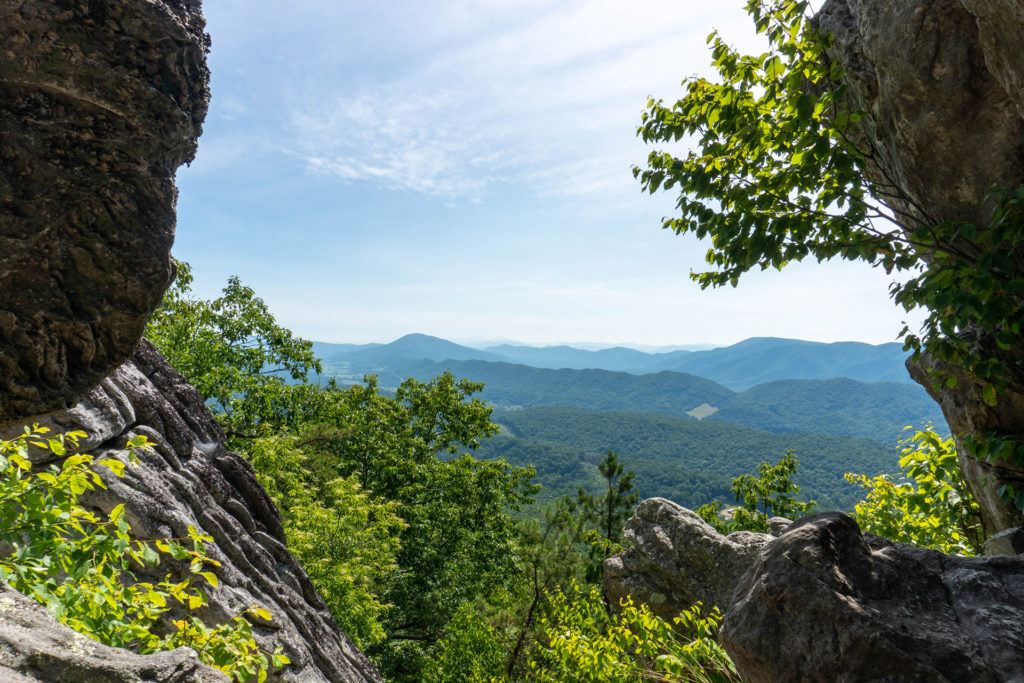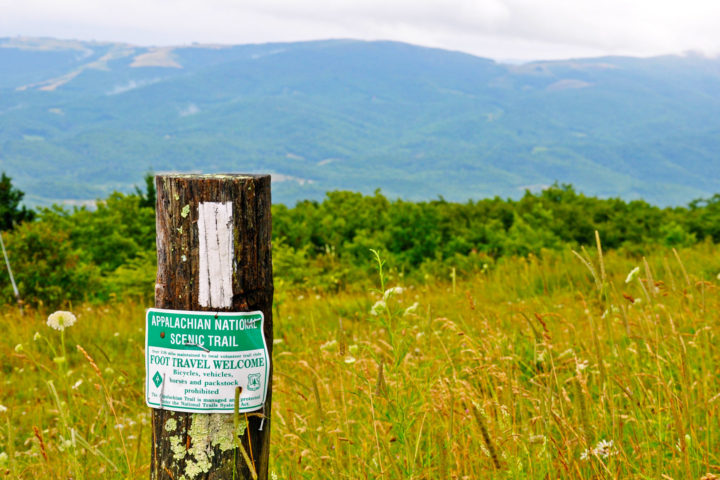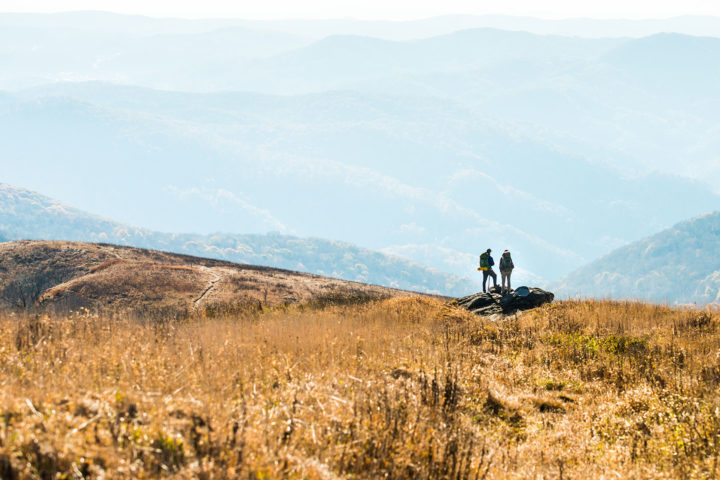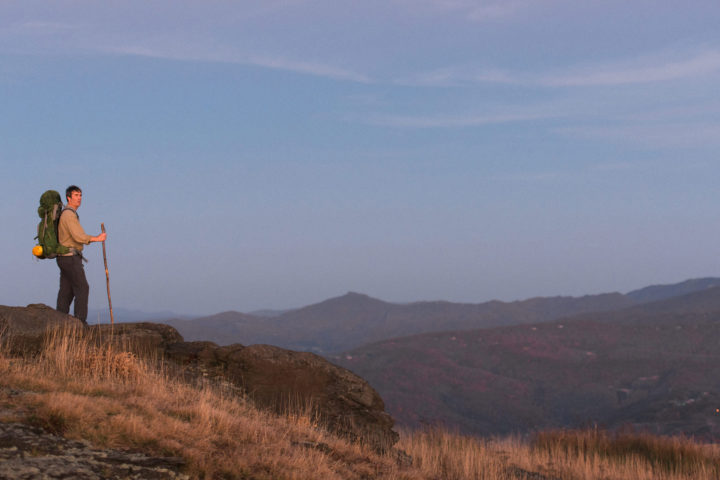COOPERATIVE TRAIL MANAGEMENT IN ACTION
Q&A with Appalachian National Scenic Trail Superintendent Ed Clark
April 2, 2024
A 37-year veteran of the National Park Service (NPS), Ed Clark has worked at the park, regional office, and national level for several decades. A champion of partnerships, he enjoys building strong public-private collaborations and providing strategic leadership to tackle complex challenges. As the fifth superintendent/park manager of the Appalachian National Scenic Trail, Ed shares his enthusiasm, vision, and personal connections to the A.T. as well as some of the priority issues that the Trail’s unique cooperative management system will be working to address during his tenure.

Q: What attracted you to the Appalachian National Scenic Trail superintendent role?
I think if you ask just about anyone in the National Park Service where they prefer to be, it’s typically in the field in a park. So, really first and foremost, I was excited to become the Superintendent of Appalachian Trail to get back to why I joined the Park Service, which is working with the public and with visitors, striving for a positive visitor experience, and working to preserve the natural and cultural resources that are entrusted to the National Park Service.
Why specifically was I interested in the Appalachian Trail? It’s really two things:
First, the Appalachian Trail is primarily a partnership park. Throughout my career I’ve really enjoyed working in partnerships. At the core, even going back to the Park Service’s founding, we do our best work when we’re working in partnership with different NGOs and affinity groups that are integral in the creation and stewardship of that Park Service unit.
Second is the A.T.’s complexity. I enjoy diversity of issues and tackling challenges that improve how we serve the American people and protect our resources. When you think about how many acres the A.T. spans over such a great distance, it’s ultimately a linear park with its own unique complexity. Add to that the number of partners that play a role in the Trail’s existence, there’s a sizable amount of on-the-ground coordination and communication that is needed to adhere to all the rules and regulations that protect the Trail while still getting things done. The Appalachian Trail Conservancy and the 30 trail maintaining clubs play a critical role in moving projects forward and doing great work for the A.T.
Q: What project/s are you most proud of from your past NPS posts?
I see myself as a “troubleshooter.” Early in my career I was assigned to the Hurricane Katrina response, not just for the Park Service but for the entire Department of the Interior. I worked to get many of the Interior employees that had been relocated due to the devastation back into their homes and back to work.
A bit later in my career, when I was Superintendent at Manassas National Battlefield Park, I conceived, coordinated, got approval, and secured funding for the National Park Service’s plans for the observance of the American Civil War’s Sesquicentennial. With the Battle of Manassas being the first chronologically of the major battles of the Civil War, we were first in line to kick things off. At the time, there was a lot of sensitivity about how to commemorate and discuss the Civil War. We decided to connect all the NPS units that are associated with the American Civil War to the NPS units that commemorate the Civil Rights era and movement both in terms of locations but also in content. I led the “Civil War to Civil Rights” programs and made sure that the signature events agency-wide had adequate funding and staffing to handle the events.
Finally, a very behind-the-scenes outcome with the greatest impact and the least amount of awareness that I’m especially proud of was a precedent setting ruling on the protection of a historic district in central Virginia. It was the first time in the commonwealth and nationally that conservation and preservation easements on privately owned had been substantially challenged. It was a happy ending because the Virginia Supreme Court upheld the validity of the easements, and the landowner was ultimately able to make the desired updates to the property.
Q: Do you have a favorite section of the A.T.?
As a Roanoke native, I spent a lot of my youth and young adult years on the Appalachian Trail in Southwest Virginia and especially near Roanoke. I literally grew up in the shadow of Tinker Mountain and Tinker Cliffs. McAfee Knob and Dragon’s Tooth are favorite spots with pleasant memories for me. (Fun fact: a picture of Dragon’s Tooth frequently appears as my background in virtual meetings.) During my years at Fareham College and then Radford University, I joke that I spent as much time in the Grayson Highlands as I did in classrooms.
I also have an affinity for the North Carolina sections. My wife and I hiked an awful lot on the A.T. and in the Smokies in the late 80s when we were dating.

Dragon’s Tooth. By ATC Staff.
Q: What are some of your goals in this new post?
There are three strategic things:
- Good governance. A lot of things fall under that, and to me that phrase has a significant impact on activities on the Trail, the work that the ATC and Trail Clubs can do, and how we ensure that we meet our obligations. There’s compliance, having greater capacity to get projects reviewed and approved, better involvement in the design of certain infrastructure, and that we’re paying attention to variety of things around sustainability and accessibility.
- Being a good partner. I have a long-standing philosophy of making friends before you need them. That comes with being willing to get to know people, seeing the bigger picture, and understanding the abilities and expertise of the partners. I’m working with the staff at the ATC to schedule a time for me to get out and meet with the clubs and club members and A.T. Communities as well as the federal and state partners who manage public lands along the Trail.
- Visitor enjoyment and experience. To me, this is about ensuring that we have adequate NPS rangers and staff to be engaged when different conversations are taking place and/or incidents occur. It’s also about increasing our efforts around land acquisition, particularly where Trail resources and sustainability are at risk when land is not protected by public ownership or through an NGO partner.
Q: What do you see as the Trail’s major challenges for the next decade and beyond?
Definitely visitor use. Being an internationally recognized destination means that the A.T. attracts a lot of people. With so many places that visitors can enter the Trail, there are spots where the use and popularity surpass the current facilities and services provided. The 10 NPS staff members in the Appalachian Trail office depend on the entrepreneurial abilities and work of the Appalachian Trail Conservancy and the Trail Clubs to help tackle the day-to-day issues and the longer-term planning needs and challenges.
Q: What do you want A.T. Clubs to know about you?
I want to be approachable. I want the Clubs and their leadership to feel comfortable reaching out to me because I’m interested in developing relationships with them. I want to hear their concerns, dreams, and frustrations and work collaboratively on how we can do things better.
Q: What aspects of the trail are you most excited to learn about and advance from what you’ve absorbed so far?
Understanding and interacting with the diverse and numerous entities, both government and NGO, that have a substantial interest and passionate for the Appalachian Trail. It goes back to being a good partner and finding those opportunities where there are joint interests, concerns, and opportunities.
Q: What is your favorite way to spend your free time?
In one word: family. My family is very important to me. My children and I share a tremendous number of interests, including history and outdoor recreation. I also enjoy spending time with my wife and her family in the Adirondacks. Being outdoors and with my family, whatever the activity, that’s my happy place.
Discover More

Official Blog
Cooperative Management is Key on the A.T.
The A.T. survives today due to the dedicated work of three separate, but interlocking, categories of cooperating Trail champions.

Official Blog
Partnering for A.T. Landscape Protection
A massive amount of collaboration and shared dedication is required to ensure A.T. landscapes are conserved.

ATC's Official Blog
A.T. Footpath
Learn more about ATC's work and the community of dreamers and doers protecting and celebrating the Appalachian Trail.
